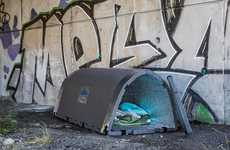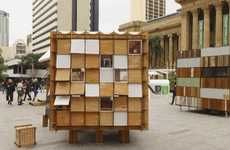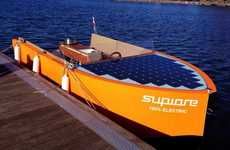
Ikea-Designed Refugee Shelters Last Longer than Tents
Meghan Young — June 27, 2013 — Art & Design
References: ikea & fastcoexist
The tents the United Nations erects for recently displaced refugees begin to disintegrate afte six months, a time frame that doesn't often coincide with finding a new, permanent home; Ikea-designed refugee shelters hopes to make the transition much easier. Built to last 10 times that long, these shelters were created in joint effort with the United Nations High Commissioner for Refugees (UNCHR).
Packaged just like other Ikea products, the Ikea-designed refugee shelters take about four hours to assemble. At 17.5 square meters, they are twice as large as the typical tent and can hold five people comfortably. Each one is made out of lightweight Rhulite plastic mounted on a supersteel skeleton. The Ikea-designed refugee shelters will begin rolling out in July.
Packaged just like other Ikea products, the Ikea-designed refugee shelters take about four hours to assemble. At 17.5 square meters, they are twice as large as the typical tent and can hold five people comfortably. Each one is made out of lightweight Rhulite plastic mounted on a supersteel skeleton. The Ikea-designed refugee shelters will begin rolling out in July.
Trend Themes
1. Semi-permanent Shelters - The development of semi-permanent shelters provides an innovative solution for long-term refugee housing needs.
2. Self-assemble Technology - The use of self-assemble technology in designing refugee shelters offers a time-efficient and cost-effective solution for emergency housing.
3. Collaborative Design Partnership - Collaborations between organizations like Ikea and the United Nations create opportunities for disruptive innovation in the humanitarian sector.
Industry Implications
1. Construction Materials - The construction materials industry can explore the use of lightweight, durable materials like Rhulite plastic to develop more sustainable and long-lasting shelters.
2. Furniture and Homeware - The furniture and homeware industry can leverage self-assemble technology to create versatile products that are easy to transport, assemble, and customize.
3. Humanitarian Aid - The humanitarian aid industry can embrace collaborative design partnerships to develop innovative solutions that address the long-term housing needs of refugees.
5.5
Score
Popularity
Activity
Freshness























